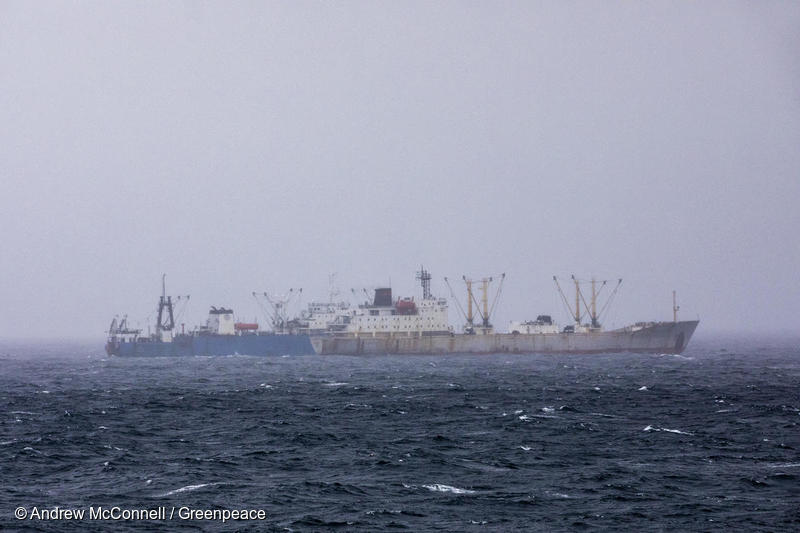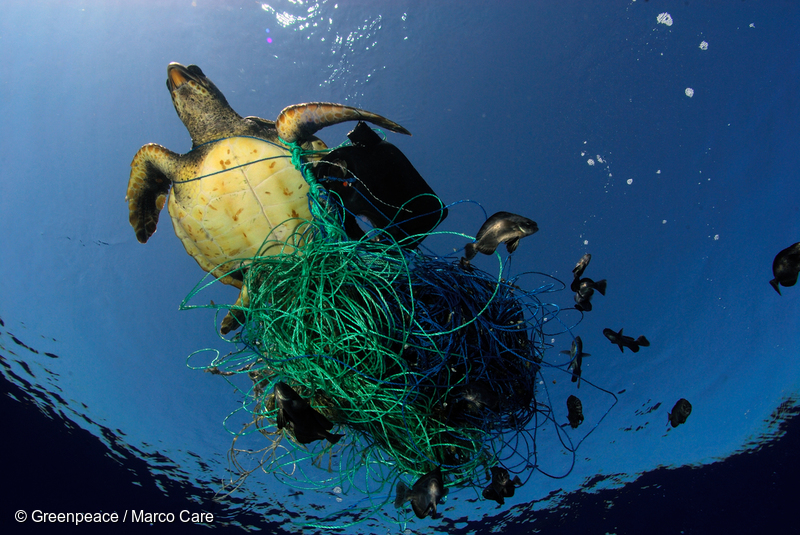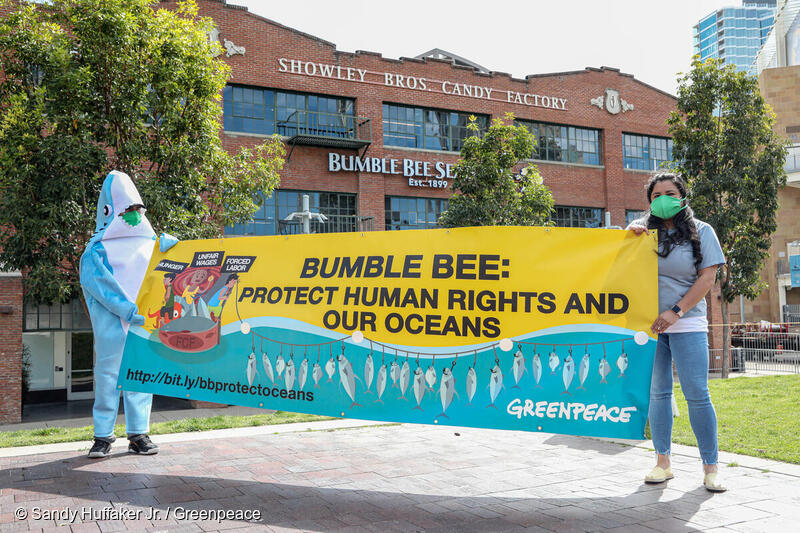The high seas. For the uninitiated, a mere mention of the phrase throws up images of a vast never-ending expanse of pristine blue waters. For those who have been paying attention, we know this vast expanse is far from pristine – threatened as it is by a toxic cocktail of climate change, plastic pollution, and the potential threat of deep-sea mining. Add to this mix the wildly destructive practices involved in high seas commercial fishing and you know we’ve got a recipe for disaster.

By now, you have likely heard of the ecologically destructive impacts of industrial-scale high seas fishing. Think of that iconic scene near the end of Finding Nemo – when the gang finds themselves caught in a monstrous purse seine net along with a school of tuna. While these fictional characters manage to escape, real fish in the ocean aren’t as lucky. Industrial fishing practices like purse seining are driving down fish stocks by taking more fish than are replenished, even catching species that we don’t eat or use, and emptying out our oceans. Bottom trawling nets that drag across the ocean floor are destroying everything in their path. By now, we’ve all seen countless images of helpless turtles caught in drifting nets. But did we know that in addition to being ecologically destructive, high seas industrial fishing is also largely unprofitable?

A turtle is caught in a fishnet trap
A recent study that used satellite data and machine learning to estimate high-seas fishing effort, costs, and benefits, found that up to 54% of high seas fishing grounds would be unprofitable if not propped up by government subsidies and extremely low labor costs. Government subsidies have been known to prop up several ecologically damaging and unprofitable industries (*ahem* fossil fuels), so this is hardly surprising. While it’s easy to estimate the role that subsidies play in propping up this industry, it’s much more difficult to determine exactly how much of this industry is subsidized by low labor costs.
The secrecy and lack of data around labor costs meant that researchers had to work with low and high estimates to determine profitability. Their calculations found that even with the lowest possible estimates of labor costs, around 19% of the world’s high seas fishing grounds would be unprofitable, and with higher estimates, this would jump to a staggering 30%.
For several years now, the global Greenpeace network has shone a light on the inhumane conditions faced by migrant fishers aboard high-seas fishing vessels. As fish populations collapse and fishing vessels have to go further out at sea, transportation and refrigeration costs have increased. While these costs are fixed, labor costs are more flexible. This is especially true far out at sea, where isolation and lack of oversight render fishers, who are often migrants with few legal protections, more vulnerable to debt bondage, wage deductions, long working hours, and even physical abuse. Shocking recent cases of deaths of fishers aboard vessels have further highlighted the extreme and systemic issues of forced labor in this industry. For instance, the US Customs & Border Protection’s recent finding confirmed the occurrence of forced labor on a Taiwanese fishing vessel, the Da Wang, where a migrant fisher recently died after being allegedly struck in the head by the vessel’s captain.
For all their efforts to cut labor costs, the profits vessel operators and owners claim are paltry compared to the brands and retailers who ultimately sell us fish in the grocery stores of the world’s richer nations. In 2018, tuna vessels worldwide netted $11 billion. Yet grocery stores earned almost four times that amount from their sales of tuna products in the same year. Our local corporate grocer and tuna brands may not directly employ the migrant fishers who spend months or even years at sea hauling thousands of pounds of tuna for over 16 hours a day, but their sourcing policies and business practices set the tone for the entire industry. These companies have a responsibility to enact policies that ensure the fish they sell is not tainted by environmental and human rights abuses.
Bumble Bee, one of the largest tuna brands in the US, has recently been linked to these human rights abuses. Its parent company, FCF, admitted to sourcing tuna from the Da Wang, the aforementioned vessel where a fisher died onboard. It’s time to hold Bumble Bee accountable.

Greenpeace US advocates deliver a petition demanding that Bumble Bee protect human rights on behalf of thousands of signers. The petition was launched in response to Bumble Bee’s parent company’s, FCF Co., LTD., recent potential implications in alleged forced labor, human trafficking, illegal shark finning, and suspected murders of a fisheries observer and a migrant worker.
Add your name to demand Bumble Bee take action to prevent human rights and environmental abuses in its supply chain.
